2019 Rd.13 RALLY DE ESPAÑA
WRC 2019 ROUND 13 RALLY DE ESPAÑA
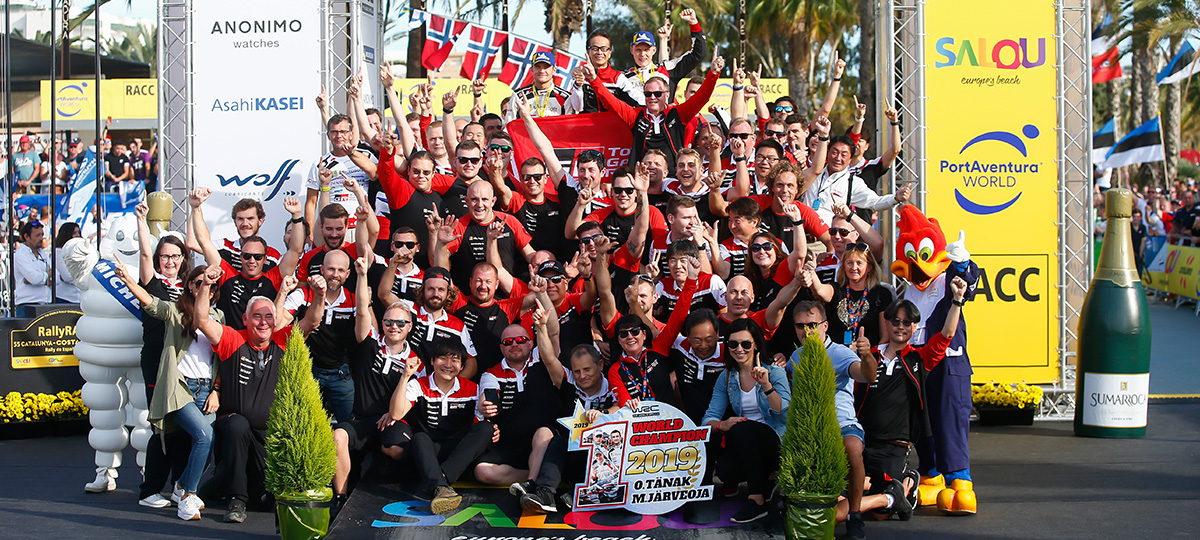
SUMMARY REPORT
The name of a new champion is etched into the history of Toyota WRC
In Round 12, Wales Rally GB, Ott Tänak secured his sixth victory of the season. He retained his place atop the drivers’ championship, and extended his lead over Sébastien Ogier in second place to 28 points. However, there were still two rallies remaining, and both Ogier and Thierry Neuville in third had the chance of clinching the title. Over the past few years, these two rivals have consistently ranked among the top drivers in the WRC, and they possessed first-rate technical ability and incredible mental resilience. In the remaining two rallies, there was a chance that the balance of power would shift dramatically; for this reason, despite having a 28-point lead, Tänak and the TOYOTA GAZOO Racing World Rally Team could not afford to relax.
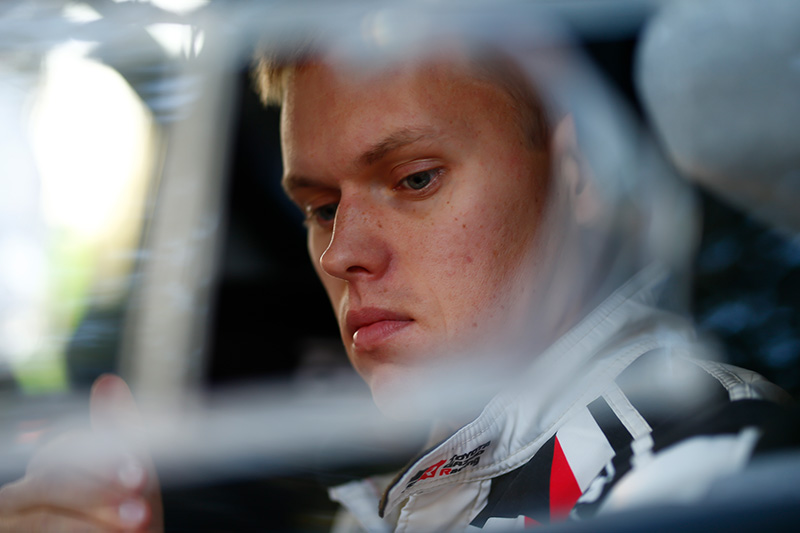
At the press conference he attended with his rivals before the start of Round 13, Rally de España, Tänak was his usual, cool self: “It was the same at the Wales Rally GB, but I expect this rally to be a fierce battle as well. Séb and Thierry have to go all out. There’s no doubt about that from their side. We’ll focus on ourselves and do all we can.”
“There is no doubt that there is pressure this weekend, but it feels like positive pressure. It gives some extra motivation to really perform well. I expect a really tight fight with our rivals.”
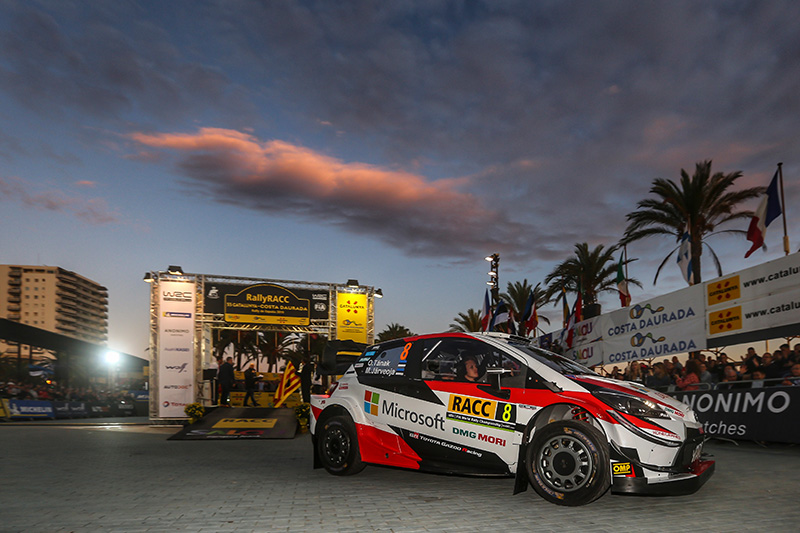
The pressure of the title battle: Tänak had been involved in the fight for the championship over the past two years; however, this was the first time he had entered the final stages of the season at the top of the standings. He was now being chased, and this generated a distress that he had not experienced before. While he was careful not to let this show, he spoke even less than usual at the pre-event team meeting. But even if he wanted to focus solely on his own battles, it was easier said than done. Rallies are regarded as being mentally more demanding than circuit races. During rallies, drivers cannot see who they are competing against, and they have no way of knowing whether they are going faster or slower than their rivals. Everything depends on how consistently they can fulfill their potential. The true enemies of the rally driver are the distracting thoughts that threaten to disrupt their concentration.
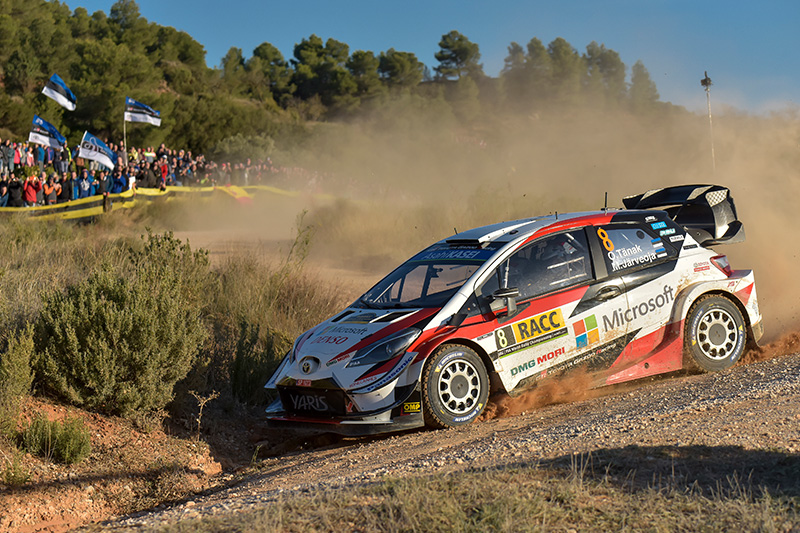
Rally de España is the calendar’s only mixed surface event. Day One takes place on gravel, while Days Two and Three take place on tarmac. Normally, it is harder to create large time gaps on tarmac than on gravel; for this reason, the gravel stages on the first day of the rally are extremely important. In dry conditions, Spain’s gravel roads are as slippery as those at other rallies because the surfaces are covered with loose gravel. As a result, the drivers at the top of the starting order act as “road sweepers,” and are at a distinct disadvantage. Depending on the stage, it is said that those driving first have a handicap of close to one second per kilometer. According to the regulations, the championship leader begins the first stage of the first day at the top of the starting order; therefore, it is the driver who can, over the course of the season, best recover from this early disadvantage who goes on to become champion.
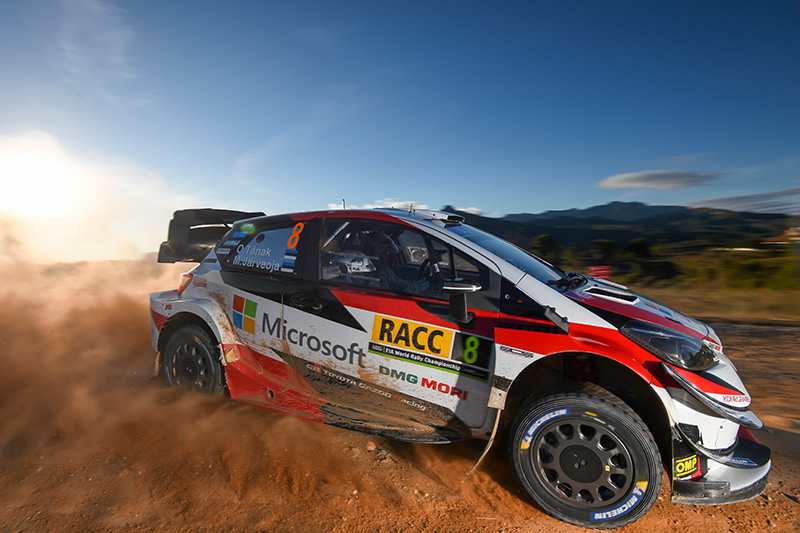
At the majority of gravel rallies this season, Tänak has driven with such power that it is easy to overlook the disadvantage of his early starts. However, the gravel roads at this season’s Rally de España were more slippery than usual and for Tänak, who was first in the running order, it proved to be a difficult start to the rally. In the morning Special Stages, the Estonian was only able to record the fourth and fifth fastest times. He finished the session in third place overall, 7.5 seconds off the lead. Normally, the gravel surfaces become comparatively clean after the morning stages have finished, and so, in the repeat afternoon stages, the disadvantage of being higher up the starting order is diminished. For this reason, the team expected Tänak to improve his times in the afternoon.
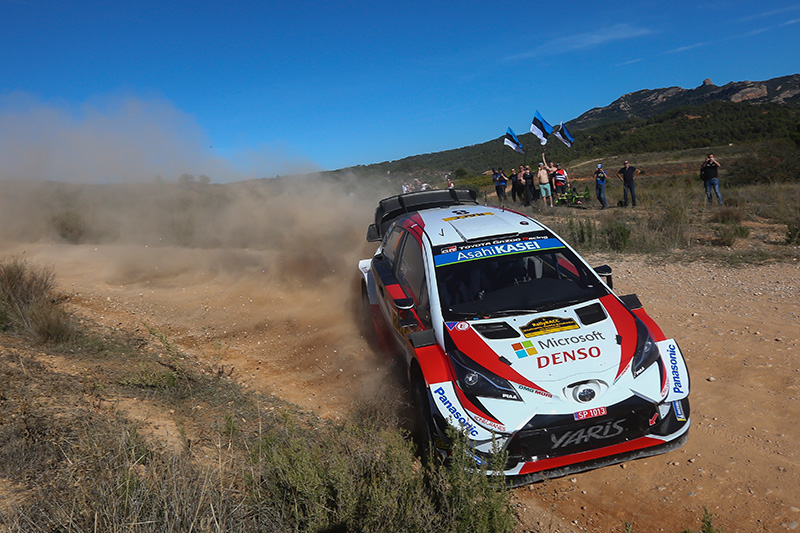
After completing the morning session and returning to the service area, Tänak only made pre-planned changes for the afternoon runs. The car was not performing badly at all. Tänak understood his times were slow because the roads were slippery, and because he had still not grasped his customary driving rhythm. However, even in the afternoon stages Tänak was unable to improve his times. Indeed, his performance deteriorated, and he fell to fifth overall, some 21.7 seconds behind the rally leader. Perhaps as a result of heavy rains, the surface conditions were trickier than normal, and the disadvantage of starting early in the running order barely decreased in the repeat afternoon stages. Nevertheless, if Tänak had been on his usual form, his times may not have been as poor—almost certainly, he was feeling the pressure of fighting for the championship.

At the end of Day One, Ogier—one of Tänak’s championship rivals—suffered a problem with his hydraulic system, lost use of his power steering, and lost a significant amount of time. Neuville, on the other hand, was second in the rally standings, 20 seconds in front of Tänak. Neuville had started a relatively early third in the running order, and so he was also driving on surfaces that were far from optimal. Yet his times were good, and the energy of the pursuer was evident in his performances.
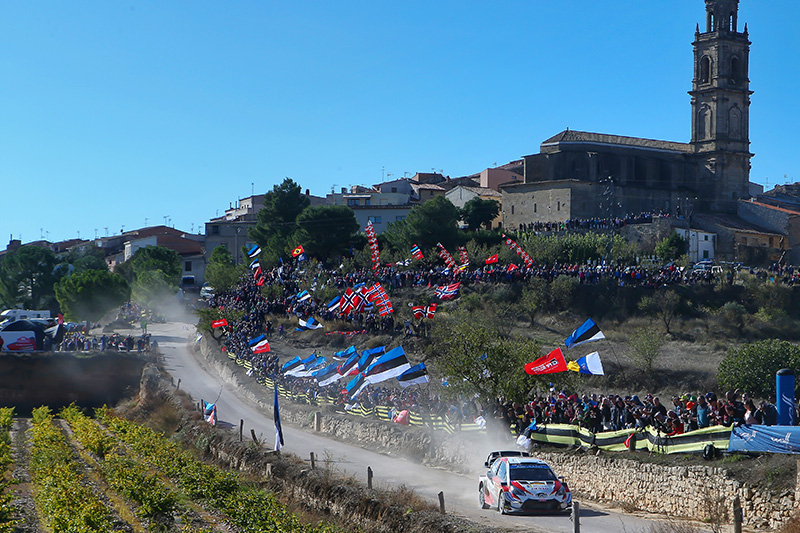
The gravel stages of Day One were followed on Day Two by tarmac stages. But Tänak’s pace did not improve. He only managed the fifth fastest times on the first two stages of the morning, and the gap to Neuville in first place grew to approximately 29 seconds. On SS9, the last stage of the morning, Tänak finally went quickest—he had at last discovered his form. Then, in the afternoon session, he secured three further stages wins, finishing Day Two in third place overall.

“The car felt good,” commented Tänak, “but it was difficult to get used to the pressure of the situation. I couldn’t find any rhythm and drive as I normally do. Many times before I have felt pressure and battled, but the pressure this weekend has been on another level. It was a pressure that I had never experienced before.” Tänak succeeded in ridding himself of distractions and relaxing, and this led to him rediscovering his driving rhythm.

Neuville, who led the rally standings, continued to perform consistently well, and at the end of Day Two he still had a lead of more than 24 seconds. Day Three, the final day of the rally, consisted of four tarmac stages with a total distance of approximately 74 kilometers. The short length of the stages made it almost impossible for Tänak to catch his rival. However, the gap between Tänak in third and the second-placed driver was just 3.1 seconds—and this was very much a closable gap. Even if Tänak finished in third position overall, he would enter the season-ending Rally Australia with a sizable points advantage. Tänak was therefore faced with a hard decision; but he was determined to attack as long as he had a chance to clinch the title, and he lined up on Day Three intending to go full-out. However, his second-placed rival excelled on tarmac stages and went faster than the Estonian, extending his lead to 5.8 seconds before the start of the final stage. The final stage of the rally, SS17, was approximately 21 kilometers in length. In the morning run, Tänak’s rival had set the fastest time; Tänak himself had set the second fastest time, one second back. Under normal circumstances, it would have been difficult for Tänak to catch his rival—he needed to go some six seconds faster, and attempting such a result would be a huge risk.
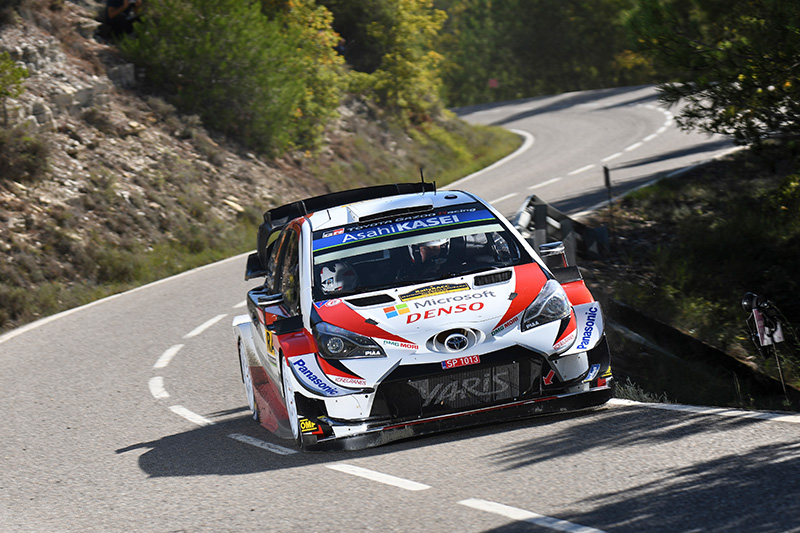
Should Tänak take the risk, or should he play it safe? The team left the decision to Tänak and his co-driver, Martin Järveoja—it was confident that Tänak would not self-destruct. The Yaris WRC was performing extremely strongly, and the team had worked flat out to improve its reliability. At the previous Wales Rally GB, the car had encountered no major issues; yet in order to further boost its reliability, the team had made a number of additional improvements. They made the driveshaft boots harder to tear and optimized shifting control to prevent damage to the gears. In addition, the team enhanced the feel of the power steering so that the drivers could drive with even greater confidence. None of these were headline-grabbing changes, but it is the accumulation of such modest enhancements that make a car stronger and faster. Determined to do everything in their power to help Tänak win the championship, the team continued to make improvements to the very end. The team had done everything it could—the rest was up to Tänak and Järveoja.
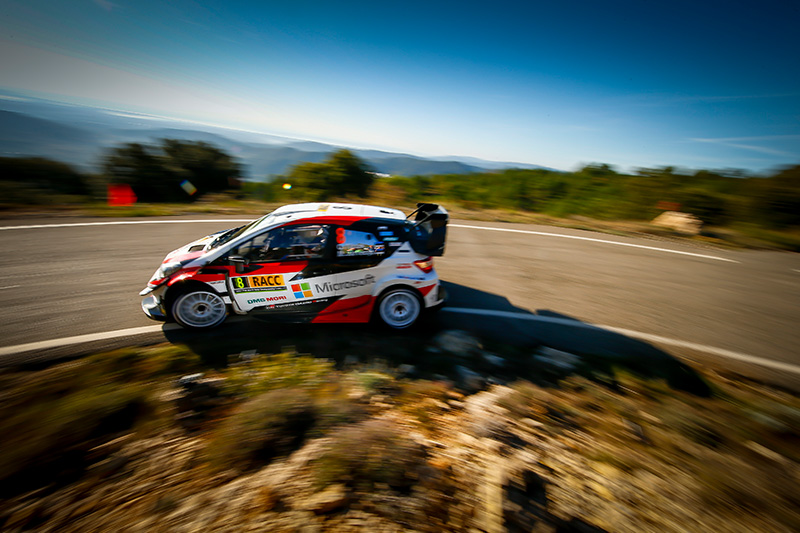
Tänak attacked. He attacked and he continued to attack. He lost his rhythm just after the start but swiftly cleared his head and implemented his characteristic smooth and aggressive driving style. Under Tänak’s skillful manipulation, the Yaris WRC demonstrated its full potential and sped over the Spanish tarmac. Tänak’s rivals had started earlier than him and so should have already finished. However, there was no way for Tänak to know their times. All he could do was drive his own race. Free of distractions, Tänak attacked throughout the 21 kilometers of mountain roads, and stopped the clock with a time of 10 minutes 49.6 seconds. On his way to winning the final stage, Tänak had gone 3.6 seconds faster than the stage’s second-fastest driver, and finished some 6.1 seconds ahead of his rival for second place in the overall rally standings. As a result, he succeeded in overhauling his rival by 0.4 seconds, and finished the rally in second position overall. Since the final stage was also the Power Stage, Tänak scored the maximum five bonus points on offer and so, with a round still to go, Tänak and Järveoja were crowned world champions. This was the first world title for the two teammates. For Toyota, it was a first drivers’ and co-drivers’ championships for 25 years, since Didier Auriol in 1994.

Tänak stopped the Yaris WRC at the Power Stage time control, took off his helmet, and stepped out of the car. He embraced his family, who had been waiting for him there, and shared his joy with them. Tänak and Järveoja then stood on the roof of the Yaris WRC and raised both their hands into the air. Järveoja screamed in delight, and joy coursed through his entire body. In contrast, Tänak wore a more restrained expression. However, after getting down from the car, Tänak placed his lips to the Toyota emblem that seemed to glow on the front of the Yaris WRC, and his eyes slowly began to grow wet with tears.

Tänak was faced with a large number of cameras and microphones; Ogier and Sébastien Loeb, who have for a long time continued to perform at the highest level of the WRC, walked over and, smiling, shook his hand. Neuville, who had won the rally but lost the championship, embraced Tänak, and the two rivals reflected on an excellent battle: it was a healthy and pure rivalry. Precisely because they had given their all, these drivers were able to truly celebrate the success of their rival. It was a refreshing spectacle that called to mind the end of a rugby match, and was a fitting conclusion to a battle at the top tier of motor racing.
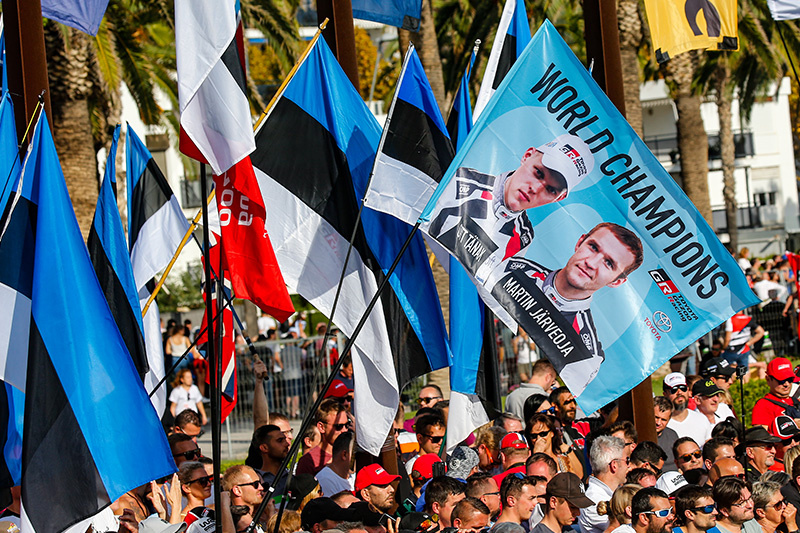
Tänak’s was clearly more relaxed after the rally than before it. He said: “The pressure this weekend has been on another level. It wasn’t easy to manage because of this, and I didn’t know how I would manage the pressure. However, in my life I have had many difficult problems, so it helps to cope with these kinds of situations. I wanted to relax as quickly as I could, and I was able to achieve a good result because I managed that. Now the relief is great. Thank you to the team; they have done a great job.”
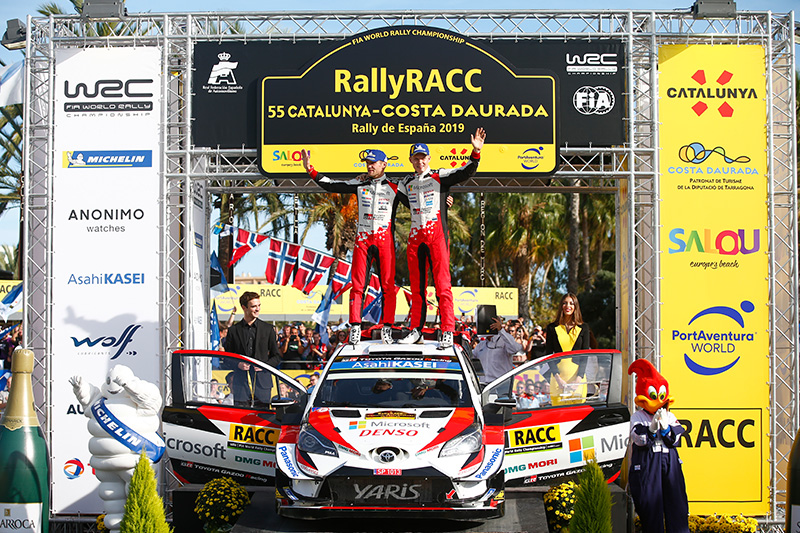
The Rally de España awards ceremony took place on a beach overlooking the Mediterranean Sea. The staff of the TOYOTA GAZOO Racing World Rally Team, which had supported Tänak’s successful bid for the title, also ascended the podium; they enjoyed the fleeting ceremony with faces almost as bright as the Southern European sun. Paul Murphy, Tänak’s trusted engineer, was overwhelmed by the occasion, mixing tears with joyous laughter. The team were certain that they had built a good car; however, it is a fact that mechanicals had cost it the chance of victory on numerous occasions. The team had continued to work hard, united in their desire to make Tänak champion at all costs. And this had finally come to pass. Murphy was liberated from huge mental pressure. Technical Director Tom Fowler was also deeply moved. Before he joined the TOYOTA GAZOO Racing World Rally Team, he had worked on the development of WR cars for other teams and he had already experienced the joy of winning a manufacturers’ championship. Last year, he had also guided the Yaris WRC to victory in the manufacturers’ championship. However, he had never before had the opportunity to celebrate a drivers’ championship. The entire team had been driven by a desire to create a world championship in a car of their own making. At long last, Tänak had helped them achieve their long-held dream.
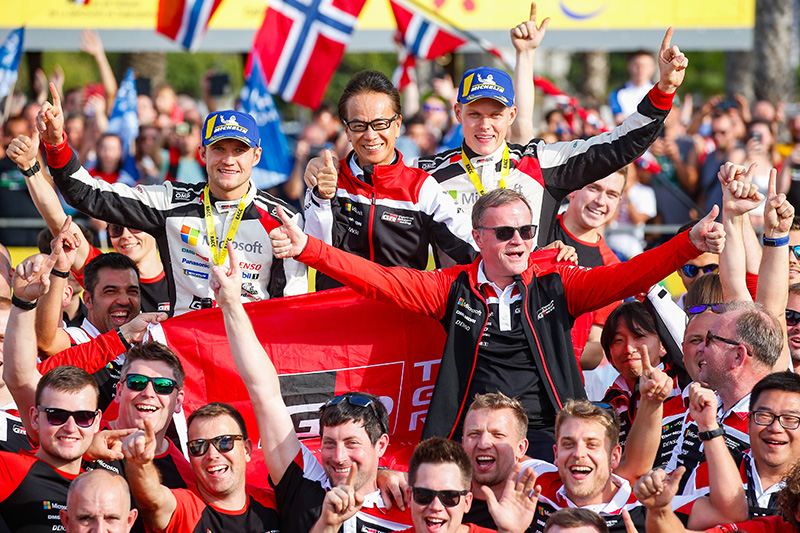
The TOYOTA GAZOO Racing World Rally Team’s position in the manufacturers’ title was on a knife-edge. Kris Meeke was third in the rally standings just after the start of Day Two, but he crashed and was forced to retire for the day. He ended the rally in 29th position overall. In order to help the team catch and overtake its rival in the manufacturers’ championship, Meeke was doing everything in his power to improve his position, and this is what caused him to crash. It was therefore down to Jari-Matti Latvala to fight for and secure manufacturers’ points. As a result of consistently reliable drives, he finished in fifth overall. Together with Tänak, Latvala contributed significantly to the acquisition of points, but the gap to the team at the top of the manufacturers’ championship nevertheless grew to 18 points. It will be extremely difficult to overcome this deficit in the final rally of the season, but the team has not given up. The only chance of victory is to fight to the very end and work hard to achieve the best possible result. Rally Australia is the final rally of the 2019 WRC season: the team will line up with an unbreakable determination to win.
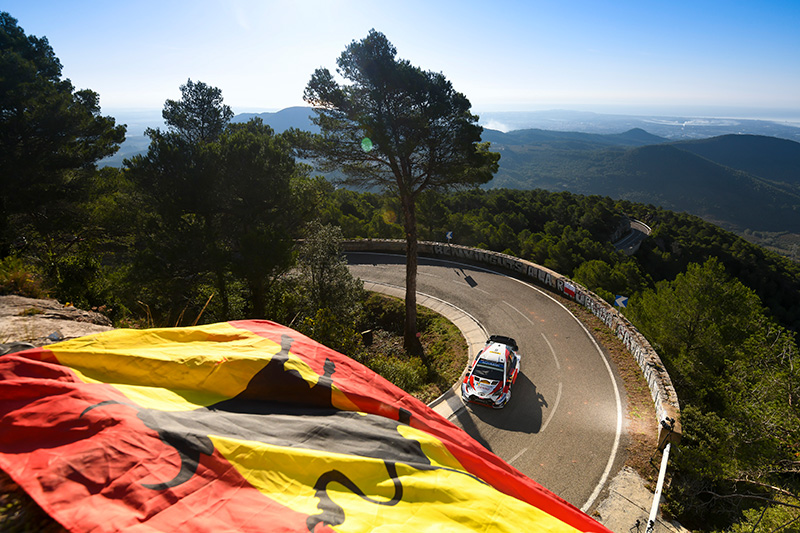
| Pos | Driver | Co-Driver | Vehicle | Time | |
|---|---|---|---|---|---|
| 1 | Thierry Neuville | Nicolas Gilsoul | Hyundai i20 Coupe WRC | 3h07m39.6s | |
| 2 | Ott Tänak | Martin Järveoja | Toyota Yaris WRC | +17.2s | |
| 3 | Dani Sordo | Carlos del Barrio | Hyundai i20 Coupe WRC | +17.6s | |
| 4 | Sébastien Loeb | Daniel Elena | Hyundai i20 Coupe WRC | +53.9s | |
| 5 | Jari-Matti Latvala | Miikka Anttila | Toyota Yaris WRC | +1m00.2s | |
| 6 | Elfyn Evans | Scott Martin | Ford Fiesta WRC | +1m14.2s | |
| 7 | Teemu Suninen | Jarmo Lehtinen | Ford Fiesta WRC | +1m47.6s | |
| 8 | Sébastien Ogier | Julien Ingrassia | Citroën C3 WRC | +4m20.5s | |
| 9 | Mads Østberg | Torstein Eriksen | Citroën C3 R5 | +8m24.6s | |
| 10 | Eric Camilli | Benjamin Veillas | Citroën C3 R5 | +8m47.2s | |
| 29 | Kris Meeke | Seb Marshall | Toyota Yaris WRC | +42m20.0s |
- RELATED TOPICS
-
-
TOYOTA GAZOO Racing World Rally Team
launches 2019 challenge at the Autosport International showThe 2019 FIA World Rally Championship season has been launched today in front of thousands of motorsport fans at the Autosport International show in Birmingham, England. TOYOTA GAZOO Racing World Rally Team is in attendance with its manufacturers’ championship-winning Yaris WRC car and its full squad of drivers and co-drivers. -
WRC 2019 ROUND 13 RALLY DE ESPAÑA Gallery
-